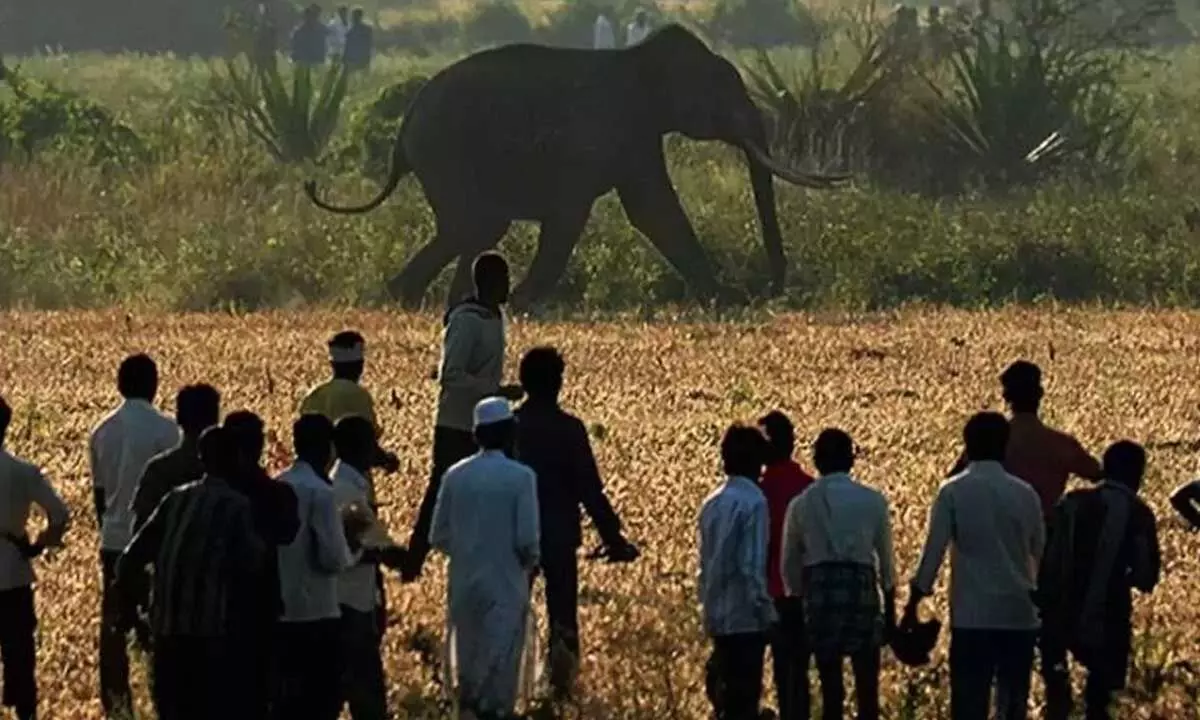One person gets killed in man-animal conflict in Karnataka per week, reveals official data

One person on average gets killed in human-animal conflict every week in Karnataka, reveals official data. According to forest department, such conflicts are mostly reported in the southern part of the state starting from Bannerghatta, Chamarajanagara, Mysuru, Kodagu and Hassan to Chikkamagaluru belt.
Bengaluru: One person on average gets killed in human-animal conflict every week in Karnataka, reveals official data. According to forest department, such conflicts are mostly reported in the southern part of the state starting from Bannerghatta, Chamarajanagara, Mysuru, Kodagu and Hassan to Chikkamagaluru belt.
More than 600 people have lost their lives due to attacks by wild animals, majority of them being from elephants, over the last decade, officials said.
Karnataka Chief Minister Siddaramaiah has termed such conflicts as a “blazing issue” before his government.
According to the data shared by the forest department with PTI, 618 people have died in human-animal conflict in Karnataka between 2010-11 and 2023-24 (up to March six this year).
These include 416 deaths from attacks by elephants, 38 by leopards, 36 by bears/sloth bears, 34 by tigers, and 32 by wild boars.
While presenting the state budget in February, Siddaramaiah outlined measures being taken towards protecting people residing in the areas bordering forests and crops from wild animals, while protecting wildlife.
To address man-animal conflict, Rs 100 crore was provided in the previous budget (2023-24) for construction of railway barricades and around 78 km of railway barricades were constructed.
In the current year (2024-25) also, priority will be given to construct barricades, the government said.
The total budget allotted to wildlife wing of the forest department for 2024-25 is approximately Rs 151 crore which is for all the wildlife related works, including Rs 60 crore alone for construction of railway barricades, one of the major preventive measures to combat human-elephant conflict.
Pointing out that animals are moving out of forests because their habitat is getting disturbed, a forest officer said a lot of weeds have started growing inside forests. With the conservation effort, population of animals, especially elephants has increased. So habitats need to improve.
“Poaching has come down, animals are increasing and the grassland which were available are now getting invaded by the weeds like lantana...So, animals come out. Then there is a conflict…to address the issue, we need to have proper barricades on the boundary of the forest. We need to have rail barricades, solar fencing, and elephant-proof trench,” he said.
“Besides that, we also need to improve the habitat inside the forest…we need to improve the quality of forest, remove the weeds, we need to improve the water levels by moisture conservation works, lot of such works are required -- be it strengthening the anti-poaching camps in forest area or controlling forest fire and we need money for all that,” he added.
Based on the surveys done earlier, the department has already identified the places where railway barricades need to be constructed. Initially, almost 640 kms were identified where railway barricades were required.
“Now the need has increased to 750 kms roughly. Out of that, starting from 2015, we have already covered 311 kms. Our task for the current year is to complete 120 km,” a senior forest official said.
According to officials, the demand for extending construction of railway barricades to other areas of conflict would also grow.
“Villagers have been complaining that elephant proof trench is not effective with incidents of soil collapses and feel rail barricades are more effective when it comes to preventing loss of lives as well as crop damage,” he said.
Noting that man-animal conflicts are “sudden”, another senior forest department official explained that with population explosion, there was conflict of space between the species.
A lot of forest area was also converted into agricultural land which was followed by expansion in terms of construction of dams, irrigation facilities and canals which also played a role.
Karnataka has an estimated 6,400 elephants, he said and out of these, may be around 350 are coming out of the forests, mostly its the young tuskers in the age group of 18-30.
Elaborating on the types of man-elephant conflicts, he said elephants which come to eat cash crops being grown just oustide the forest area hurriedly return before the first ray of sun arrives and most of these conflict occurs when they are rushing back.
“In such circumstances, these elephants are in a hurry to head back and if a human being comes in the path of it, they get killed”, a department official said.
“Most of the killings are all accidental and most of these deaths are in early morning or late night”. Also, male tuskers venture into coffee estates, coming into conflict with workers there.
Principal Chief Conservator of Forests (Wildlife), Subhash K. Malkhede, said: “Not just elephants, we are also in conflict with tigers, leopards and sloth bears. Our field staff is overstressed.
We do require help from other departments also to deal with human-animal conflict because it is sudden and when it happens, the pressure is more on our field officials and to address the issue, we require lot of coordination at district levels and every department should come together and help the forest department. Our department is trying to not only conserve animals but also protecting human beings from getting killed”.














